Exciting New Releases: ZD Toys Collection & Superman Collection
Exciting New Releases: ZD Toys Collection & Superman Collection

All Spider-Man Suits in Movies Ranked and Explained (2002–2021)
August 14, 2025 13 min read
For more than two decades, the iconic red-and-blue of Spider-Man has swung across the silver screen in countless shapes and styles—each one a reflection of the hero wearing it, the battles he’s fought, and the worlds he’s protected. From the streets of Queens to the far reaches of the multiverse, Peter Parker’s suit has been as much a part of his story as the mask he hides behind.
It all began with Sam Raimi’s beloved trilogy, where Tobey Maguire first brought the friendly neighborhood Spider-Man to life. His take on Peter Parker was raw, heartfelt, and grounded—a young man juggling responsibility and sacrifice beneath a suit that instantly became an icon. Then came Andrew Garfield in The Amazing Spider-Man series, a sleeker, more agile wall-crawler whose time in the spotlight was tragically cut short after just two films. And now, in the Marvel Cinematic Universe, Tom Holland’s Spider-Man swings higher than ever—woven deeply into the fabric of the Avengers, his story shaped by mentors, mistakes, and multiversal mayhem.
Like any Marvel hero, Peter has faced a rogues’ gallery of unforgettable foes—Doctor Octopus, Green Goblin, Venom, Sandman, and more—each with their own unique powers and threats. With enemies this dangerous, Peter’s suits have been more than just a disguise; they’ve been armor, survival tools, and sometimes even lifelines. They keep him safe, keep his identity hidden, and give him the edge he needs to save the day.
Across twenty years of cinema, Spider-Man has worn 14 different suits—each designed for a specific purpose, each telling a chapter of his journey. Some enhance his strength, others adapt to new worlds, and a few carry the emotional weight of the battles he’s fought. But the real question is—what makes each suit truly different?
Spider-Man — The Wrestling Suit
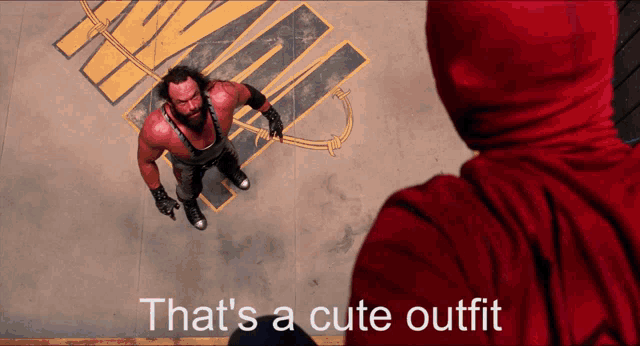
Before the legend, before the web-shooters, and before the city ever knew his name—there was a kid with a crush, a dream, and a hastily stitched disguise.
One night, while walking home, Tobey Maguire’s Peter Parker shared a moment with his longtime crush, Mary Jane Watson—only to watch her drive away in a friend’s shiny new car. Jealousy and longing stirred something in him, and by the next day, fate handed him an unusual opportunity: a newspaper ad for an amateur wrestling competition. The prize money was enough to buy a car, and in Peter’s mind, that was enough to get Mary Jane’s attention.
After sketching a few ideas, Peter threw together his very first “superhero” outfit—a far cry from the polished suits we’d see later. It was simple, almost laughably so: a long-sleeved red shirt emblazoned with a hand-drawn spider emblem, blue sweatpants, a makeshift mask, and gloves. No armor, no tech, no real protection—just a disguise to keep his face hidden while stepping into the ring.
It wasn’t sleek, it wasn’t tactical, but it was authentic. This was Peter Parker at his rawest—before responsibility shaped him into a hero, before tragedy turned him into Spider-Man. The Wrestling Suit wasn’t built for saving the city… it was built for chasing a dream.
Spider-Man & Spider-Man 2 — The Original Tobey Maguire Suit

Grief has a way of shaping destinies. After Uncle Ben’s death, Peter Parker found himself haunted by the words that would define his life: “With great power comes great responsibility.” No longer driven by teenage impulses or fleeting jealousy, Peter chose to wield his newfound powers for something far greater—protecting the people of New York.
The wrestling gear was gone. In its place, Peter created the suit that would make him a symbol of hope swinging through the city skyline. This was the iconic Spider-Man costume—the one etched into the memory of an entire generation. It was bold, heroic, and unmistakable: a deep red-and-blue fabric, web patterns raised like silver threads, and a sleek black spider emblem resting proudly on his chest.
This suit became the face of Spider-Man and Spider-Man 2, the armor Peter wore against villains like the Green Goblin and Doctor Octopus. For the sequel, director Sam Raimi made subtle refinements—richer reds, deeper blues, and a brighter vibrancy that caught the sunlight as Peter swung between skyscrapers.
It wasn’t just a costume—it was a promise. A promise to honor Uncle Ben’s memory, to stand between the innocent and the dangerous, and to prove that even an ordinary kid from Queens could become extraordinary.
Spider-Man 3 — The Black Symbiote Suit

Darkness doesn’t always arrive with thunder—it can slip in quietly, disguised as strength. In Sam Raimi’s Spider-Man 3, Peter Parker’s world cracked open when he uncovered the truth about his uncle’s real killer. Grief curdled into anger, and anger into obsession. The boy who once swung through New York with selfless purpose began to change—growing overconfident, vengeful, and unrecognizably cold.
One night, during a restless, haunting dream, it found him—a living shadow. A fragment of alien symbiote, black as midnight, crept over his original suit and consumed it whole. When Peter woke, he was clad in an all-black version of Spider-Man’s iconic costume, its sleek, ominous surface gleaming under city lights. It wasn’t just a new look—it was a new feeling.
The black suit granted him heightened strength and resilience, making him faster, stronger, and more brutal in battle. Against Flint Marko, the Sandman, Peter’s newfound power crushed his enemy with ease. But with every victory, the suit whispered poison into his soul, amplifying his rage and drowning out the voice of responsibility.
Realizing the darkness was devouring him from the inside, Peter tore the symbiote away in a moment of desperate clarity. But freedom came at a cost—the alien found a new host in Eddie Brock, Peter’s rival at the Daily Bugle, and together they became the nightmare Peter feared most: Venom.
The Amazing Spider-Man 1 & 2 — The Andrew Garfield Suit

A new era, a new Peter Parker. When Andrew Garfield stepped into the role, Sony sought more than just a recast—they aimed to reinvent Spider-Man from the ground up. This wasn’t Tobey Maguire’s world anymore; this was a sleeker, edgier Spider-Man, born in a story that promised a fresh perspective while still carrying the weight of great responsibility.
The first suit reflected that shift. It was leaner, sharper, with tinted yellow lenses that gave Peter a more predatory edge. The black interwoven striations across the fabric were subtle, letting the red and blue dominate but with a modern, almost athletic finish. This was a Spider-Man who looked like he could sprint across rooftops or dive headfirst into the chaos of a New York night.
By the time The Amazing Spider-Man 2 arrived, the look evolved again—this time leaning back toward tradition. The suit’s design embraced a more classic, comic-inspired style, with larger, whiter eyes and a color palette that felt brighter, closer to the suit worn in Sam Raimi’s trilogy. It was as if Peter himself had grown more comfortable in the role, finding the balance between the raw, modern energy of his early days and the timeless heroism that Spider-Man has always embodied.
Two suits, two films—each marking a step in Andrew Garfield’s Peter Parker’s journey from an uncertain, rebellious young man to a Spider-Man who looked and felt like he had truly claimed the mantle.
Spider-Man: Homecoming — The Homemade Suit

Before Stark tech, before nanobots, before Spider-Man became an Avenger—there was a kid from Queens with a dream, a sewing kit, and a knack for improvisation. In Spider-Man: Homecoming, Tom Holland’s Peter Parker swings into action wearing the most personal suit he would ever make—crafted not in a lab, but in his own bedroom.
This wasn’t just a costume; it was a snapshot of Peter’s goofy, awkward, and endlessly lovable personality. The mismatched fabrics, the hoodie-style top, and the bright, wide-eyed mask felt like something pulled straight from a teenager’s sketchbook. And yet, for all its homemade charm, it still had its share of clever tricks.
The black goggles weren’t just for style—they sharpened his vision, letting him see clearly even when whipping through the air at breakneck speed. His wrist-mounted web-shooters weren’t state-of-the-art, but they were reliable enough to snare bad guys and keep him swinging when things got dangerous.
It was during his showdown with the Vulture that this scrappy suit truly proved its worth. No AI, no auto-targeting, no instant-kill mode—just Peter Parker, his wits, and a suit stitched together with as much heart as fabric. It was a reminder that before the world knew Spider-Man as a superhero, he was just a kid trying to make a difference—with whatever he had on hand.
Captain America: Civil War & Spider-Man: Homecoming — The Tony Stark Suit
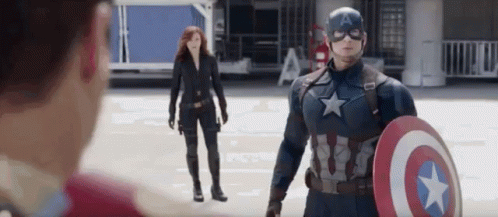
For a young hero still swinging between rooftops in a homemade hoodie, the moment Tony Stark handed Peter Parker his first real Spider-Man suit was nothing short of life-changing. In Captain America: Civil War, this wasn’t just an upgrade—it was Peter’s official welcome into a much larger world.
Sleek, vibrant, and impossibly advanced, the Stark suit came loaded with tech Peter had never dreamed of. At its heart was a built-in AI system—a voice in his ear guiding him through combat, analyzing threats, and unlocking an arsenal of abilities. The spider emblem on his chest wasn’t just a symbol; it could detach and deploy as a drone, capable of scouting, attacking, and stunning enemies from a distance.
The suit’s triangular webbing stretched from underarm to torso, letting Peter glide through the air like he was riding invisible wings. Inside, Stark had embedded GPS tracking and a holographic projection system, so Peter could map his surroundings straight from his wrists—turning every street and alley into a tactical advantage. Even his web-shooters got an upgrade, boasting a menu of firing modes, from precision shots to the web-snare, perfect for immobilizing targets in seconds.
It was high-tech, high-powered, and undeniably “Iron Man” in design—but at its core, it was still Peter’s suit. A gift from a mentor who saw his potential, this was the moment the friendly neighborhood Spider-Man stepped into the spotlight as a hero the world would soon never forget.
Avengers: Infinity War & Endgame — The Iron Spider Suit
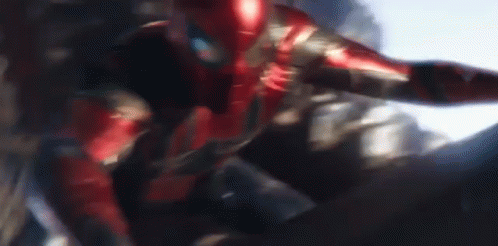
Some upgrades are just new tools. Others feel like stepping into an entirely different league. After saving a plane full of priceless Stark tech, Peter Parker earned more than just Tony Stark’s gratitude—he earned a masterpiece of engineering: the Iron Spider suit.
Gone was the soft fabric of his earlier costumes. In its place stood a sleek, armored design that could repair itself mid-battle. But the most striking feature wasn’t its metallic sheen—it was the four spider-like mechanical legs that could unfold from Peter’s back in a blur of motion. These appendages moved with terrifying speed and precision, shielding Peter from attacks, striking enemies, and giving him a reach far beyond human limits.
With the Iron Spider, Peter gained more than strength and agility—he gained survival in environments no normal hero could endure. Whether he was fighting in the vacuum of space or sprinting through alien battlefields, the suit sealed him off from the elements, ensuring the young Avenger could push further than ever before.

And when the stakes were at their deadliest, the suit held a final, ruthless advantage—Instant Kill mode. In this state, the mechanical legs acted independently, a flurry of lethal efficiency capable of taking down multiple enemies in seconds.
It wasn’t just armor—it was a symbol of trust from his mentor, a reminder that Tony Stark believed Peter was ready to stand among the mightiest heroes on Earth… and beyond.
Into the Spider-Verse — Miles Morales’ First Suit
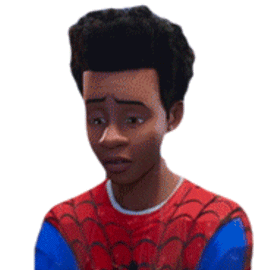
Every Spider-Man has an origin. For Miles Morales, it wasn’t about high-tech armor or sleek, battle-ready design—it was about taking that first shaky step into a much bigger destiny.
In Spider-Man: Into the Spider-Verse, Sony reimagined the Spider-Man mythos through a bold, animated lens, bringing Miles’ story to life with heart, humor, and style. And like Peter Parker before him, Miles’ first suit was… well, far from perfect.
He didn’t build it in a lab or stitch it together with care—it came from a local store, hanging limply on a rack, waiting for a kid with too much courage and too little experience. Made of thin, cheap fabric, its design mirrored the wrestling costume from Sam Raimi’s first Spider-Man film, complete with cut-out eye shapes that gave it a plain, almost comical look. There were no hidden gadgets, no enhanced durability—just a mask to protect his identity and a symbol, however rough, that he was ready to try.
And that’s exactly what made it perfect. Because this wasn’t about the suit—it was about Miles stepping into the role, fumbling, learning, and growing into the hero he was meant to become. Every legend has to start somewhere, and for Miles Morales, it started here—cheap fabric, shaky confidence, and all.
Into the Spider-Verse — Miles Morales’ Second Suit
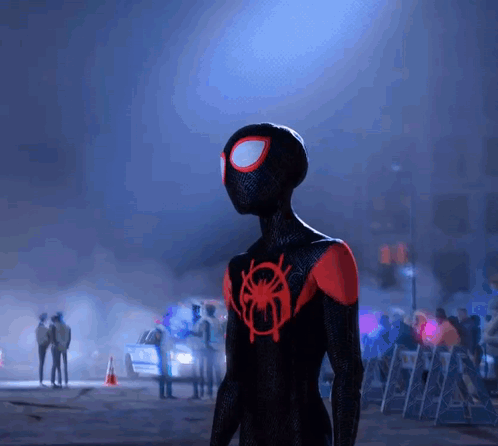
Every Spider-Man has a moment when the mask stops being borrowed—and becomes theirs. For Miles Morales, that moment came when he shed the store-bought disguise of his first outing and stepped into a suit that screamed identity.
In Spider-Man: Into the Spider-Verse, this transformation wasn’t just an upgrade in fabric—it was an upgrade in self. Instead of Peter Parker’s familiar red and blue, Miles claimed a red-and-black design, instantly setting himself apart and reshaping the city’s image of the web-slinger. The chest emblem wasn’t neat or symmetrical—it was graffiti-styled, a vibrant, rebellious stroke of paint that reflected Miles’ own artistic soul and love for street art.
This suit didn’t just look the part—it worked for him. With it, Miles could tap into crime reports, analyze his surroundings with sharp, reactive eye lenses, and even spot enemies through walls—tagging them so he could track their every move. It was the kind of gear that let him move like a shadow, strike with precision, and never lose his mark.
But more than the gadgets, this was the moment Miles Morales became his own Spider-Man—no longer walking in Peter Parker’s shadow, but swinging high above the city in colors, style, and spirit that were entirely his own.
Into the Spider-Verse — Peter Parker’s Suit

Some looks are so timeless, they don’t need reinvention—they just need to be worn by the right hero. In Spider-Man: Into the Spider-Verse, both Peter Parker and his older, wearier counterpart Peter B. Parker swung into action wearing a suit that was pure classic Spidey—bright red and blue, bold webbing, and that familiar black spider emblem on the chest.
There were no radical design changes here, no flashy upgrades—just the iconic Spider-Man look that generations of fans have grown up with. But animation brought it to life in a way live-action never could. Peter’s facial expressions—from sly grins to determined glares—were more vivid and emotive, making every swing, quip, and mid-air battle feel alive. And when his Spidey sense kicked in, the screen lit up with wavy, comic-inspired lines, turning an instinct into a visual thrill.
It was Spider-Man as we’ve always known him—yet painted in the vibrant, kinetic style of the Spider-Verse, reminding us why this suit, no matter the universe, will always feel like home.
Spider-Man: Far From Home — “Night Monkey” Stealth Suit
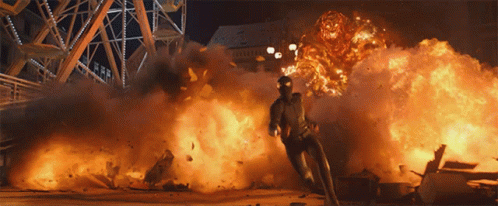
Sometimes, the greatest challenge for Spider-Man isn’t defeating a villain—it’s keeping Peter Parker hidden. During his European school trip in Spider-Man: Far From Home, Peter found himself caught between sightseeing and saving the world. With the Elementals wreaking havoc and Nick Fury pulling him into the fight, Peter knew one thing—he couldn’t risk his classmates discovering his secret.
Enter S.H.I.E.L.D., with a solution straight out of the shadows: a black stealth suit designed to let Peter operate without screaming “Spider-Man” to the world. Gone were the vibrant reds and blues—in their place, muted fabrics, tactical textures, and a mask that turned the friendly neighborhood hero into an unrecognizable figure. It wasn’t flashy, it wasn’t packed with cutting-edge tech—but it was exactly what he needed.
The disguise worked so well that when Peter’s best friend Ned Leeds needed a cover story, he christened the mysterious vigilante “Night Monkey”—a name so ridiculous it somehow stuck. And while the suit offered no special upgrades, it became an instant fan favorite, proving that sometimes a hero’s coolest moments are born from necessity… and a little bit of absurdity.
Spider-Man: Far From Home — The Upgraded Suit

In the final act of Spider-Man: Far From Home, Peter Parker found himself beaten, bloodied, and betrayed. Quentin Beck, the man the world saw as a hero, had left him for dead. But Spider-Man doesn’t stay down. Rescued by Happy Hogan and racing against time, Peter knew he needed more than courage to stop Mysterio’s illusions—he needed the perfect suit.
Aboard the Stark jet, surrounded by the echoes of his mentor’s legacy, Peter opened the Fabricator. Holograms of his past suits hovered before him—each a chapter of his journey. Drawing on what he’d learned from every version, he began crafting something new: a sleek red-and-black suit, a visual break from his earlier colors, as if marking a new chapter in his life.
It lacked the built-in AI and the countless web-shooter combinations of Tony Stark’s designs. No drones. No instant-kill mode. Minimalistic, by Spider-Man standards. But that was the point—this was Peter’s suit, built for one mission: taking down Mysterio and reclaiming his identity as a hero on his own terms.
It wasn’t the tech that made it powerful—it was the hands that built it and the resolve of the man who wore it.
Spider-Man: No Way Home — The Inside-Out Suit
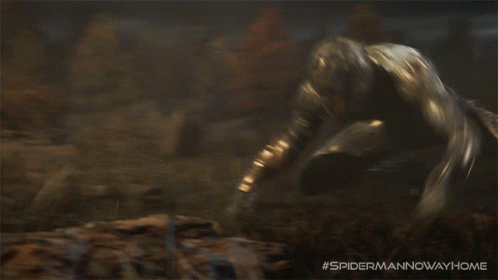
Sometimes, even superheroes have bad days—and for Peter Parker, that day came with a bucket of green paint. In the extended cut of Spider-Man: No Way Home, a furious Mysterio supporter hurled the paint straight at him, splattering his upgraded suit with a stubborn stain that refused to wash out. Peter scrubbed, cleaned, and tried every trick in the book—nothing worked.
But Spider-Man is nothing if not adaptable. Before his fateful run-in with Electro and Sandman, Peter came up with a quick, unconventional solution: flip the suit inside-out. What emerged was an unexpected look—black and gold, wires and circuitry exposed like the inner workings of a hero mid-battle.
From the trailers, it might’ve looked like a brand-new piece of Stark tech, but in truth, it was just a clever workaround. No hidden gadgets. No new AI. Just Peter making the best of a bad situation—turning a stain into a statement, and proving once again that Spider-Man’s greatest tool isn’t his suit… it’s his ability to improvise.
Spider-Man: No Way Home — The Integrated Suit
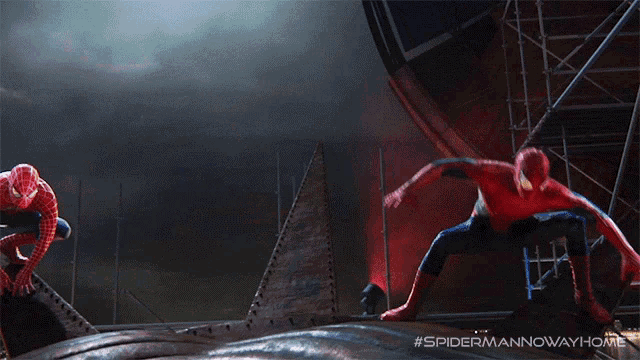
By the final act of No Way Home, Peter Parker had been through battles that tested not just his strength, but his heart. After curing Dr. Otto Octavius and freeing him from the grip of his own mechanical tentacles, Peter regained control of the stolen nanotechnology—a gift of Stark’s ingenuity, once turned against him.
Instead of simply restoring what was lost, Peter fused the nanotech with his upgraded red-and-black suit, creating something new. The result was a striking, golden spider emblem stretched across his chest—a visual echo of both Tony Stark’s legacy and Peter’s own hard-won growth.
In terms of tech, it wasn’t a radical overhaul. No hidden arsenal. No sweeping redesign. But the suit’s significance lay in what it symbolised: a young hero learning to merge the lessons of those who came before with his own identity. In that gold, there was pride, grief, and a resolve to stand on his own—Spider-Man reborn through experience, not just upgrades.
From stealth missions in Europe to multiversal showdowns in New York, Tom Holland’s Spider-Man suits tell a story of growth, resilience, and heart. Each design isn’t just about style—it’s a chapter in Peter Parker’s journey, capturing the battles he’s fought, the allies he’s lost, and the hero he’s becoming.
Calling all Spiderman fans—dive into our exclusive range of Spidey and Marvel collectibles and bring home your favourite heroes today!
Subscribe
Sign up to get the latest on sales, new releases and more …
